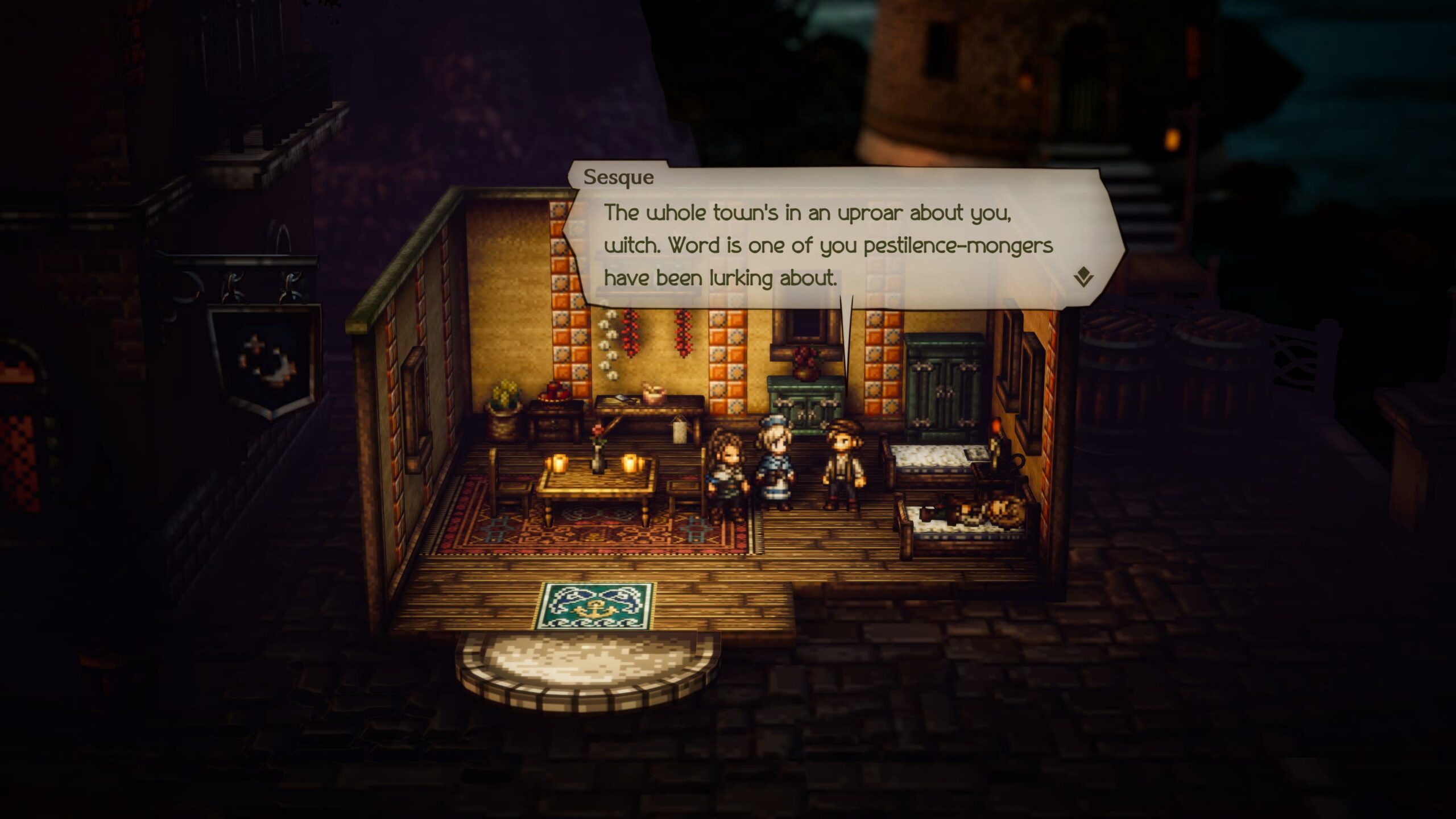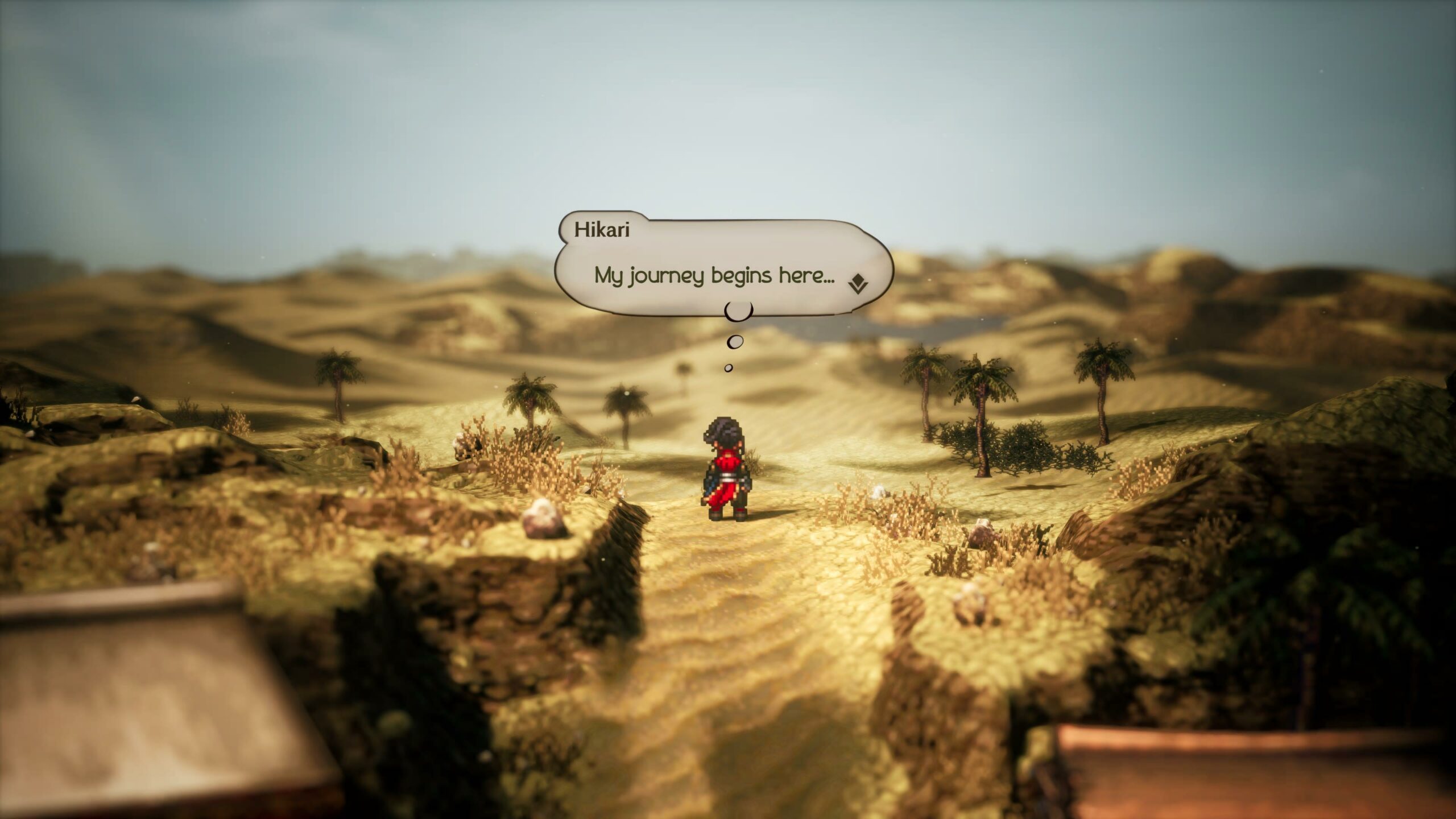I’ve been spending some serious time with Octopath Traveler II, Square Enix’s next big HD-2D adventure and the sequel to the game that started it all for the increasingly popular aesthetic. To be blunt, I’m pretty much in love with it.
Let me be clear, however. I adore the original Octopath Traveler. I’m a big fan of the HD-2D engine it brought into the world, and I was impressed with its continued usage in Triangle Strategy and Live A Live. I think composer Yasunori Nishiki’s soundtrack for the first game is outstanding. The fast-paced combat feels great, too. Best of all, I love interrogating the hundreds of townsfolk in that game with its ‘Path Actions’ – reading profile blurbs about them, robbing them blind, compelling them to become my minions, so on and so forth.
I mentioned all that with the hope of establishing some precedent before I dive into my time with the sequel. Octopath Traveler II, you see, does not reinvent its series’ wheel. Rather, it refines that wheel. Having experienced the inaugural story chapter for each of the game’s eight playable characters, I’m feeling very good over here. I’d go so far as to say it’s an improvement upon the base formula on every level.

Of course, that means if you weren’t quite so enamored with the first one, the new kid on the block is unlikely to change your mind. Combat in Octopath Traveler 2 builds upon a preeexisting system, sprinkling in some cool new ideas and adding clever twists to familiar formulas. You’re still seeking every foe’s weaknesses before shattering their defenses with a set number of strikes. New abilities are once again unlocked via Job Points. Up to four passive abilities can be equipped. In fact, all eight basic starter jobs are identical to the first game’s.
For the most part, the core structure of Octopath Traveler 2 remains unchanged as well. Of the eight main party members, players must choose one to serve as their protagonist and then gradually recruit the other seven. I’ve gathered the full crew at this point, and while one of them tosses in a wrinkle – you play their first and second chapters back-to-back before they’ll join you – the rest play out precisely as before. Their first chapters are experienced retroactively, since only the protagonist’s is your ‘true’ beginning. From there, we’re presumably free to tackle the remainder of everybody’s tales in whatever order we’d like.
There’s a night-and-day mechanic now, which works spectacularly well for Octopath Traveler II‘s many splendid settlements. Most cities have dozens of folks to interact with, and some will only be around during the daytime or nighttime phase, respectively. Rather than a clock ticking in the corner of the screen to denote in-universe hours, players can freely toggle between these two phases (except when the plot dictates otherwise, which is the case for large swaths of the introductory chapters).
The thing that makes flipping the clock around so engaging is that not only are there more ways to engage with all these NPCs, but – I cannot stress this enough – the writing is superior to the original Octopath across the board. If you’re at all like me, you’re going to find yourself positively feasting on the unlockable profile data for so many of these people. Some hide tragic lives behind thin smiles. Others are playing the rest of their towns for fools. Even just in the starting areas, there’s plenty of goodness.
That qualitative writing uptick makes the individual stories themselves so much richer, too. I like Octopath Traveler‘s cast, but I can’t say I truly loved any of them save perhaps for Primrose and Cyrus. In Octopath Traveler II, there’s not a weak link to be found. Everyone is fascinating in their own way, and the minute-to-minute back-and-forth banter between our heroes and the people who populate each of their tales is head-and-shoulders improved. There’s simply far less redundancy in the script; less time is spent repeating specified pontifications and soliloquys, giving the narrative substantially stronger pacing.
Graphics, too, have advanced considerably in the five years since HD-2D was put on the map. Octopath Traveler looked great as a proof-of-concept, but the engine has really gone places since, and Octopath Traveler II brings it to the next level, with greater depth, environmental complexity, and all-around detail. The result is a livelier, lovelier world. There’s much more I wish to say about the world’s design, and I will – in the full review.
It’s a pretty good sign of the finished product here that I eagerly await my next several-hour session with Hikari and the band of misfits whose paths have intertwined with his own. Things may yet turn around for the worse in some way, but it’s fair odds Octopath Traveler II shall continue to feel like the perfect sequel – a game that takes its predecessor as a foundation upon which to build, build, build.

Recent Comments